Demand for experiential travel has exploded in 2025, with travelers wanting to take part in authentic and meaningful experiences related to culture and environment, rather than just simply sightseeing.
“We’re seeing tremendous demand from guests who want their villa to be more than just a beautiful place to stay,” explains Andrew Macafee, CEO of WhereToStay.com.
And it’s not any old experiences people are chasing, as nearly 3 in 4 are interested in taking holidays based on their personal passions and interests, with history and heritage emerging as particularly powerful draws.
“They want to sleep where history was made, dine where kings once held court, and wake up in rooms that have witnessed remarkable events. These properties offer historical significance in a way that modern hotels can replicate, while delivering a level of immersion that no museum or guided tour can match, because guests aren’t just observing the past from the outside, they’re staying inside it.
“The accommodation itself becomes part of the experience, a portal into a fascinating time.”
WhereToStay’s portfolio includes some of the world’s most fascinating, historically significant private residences, each offering guests the rare opportunity to step directly into living history.
For those seeking a trip that goes far beyond the surface, WhereToStay has lined up five truly remarkable places where you can quite literally stay where history happened.
1. Prison of the Man in the Iron Mask, Sainte Marguerite
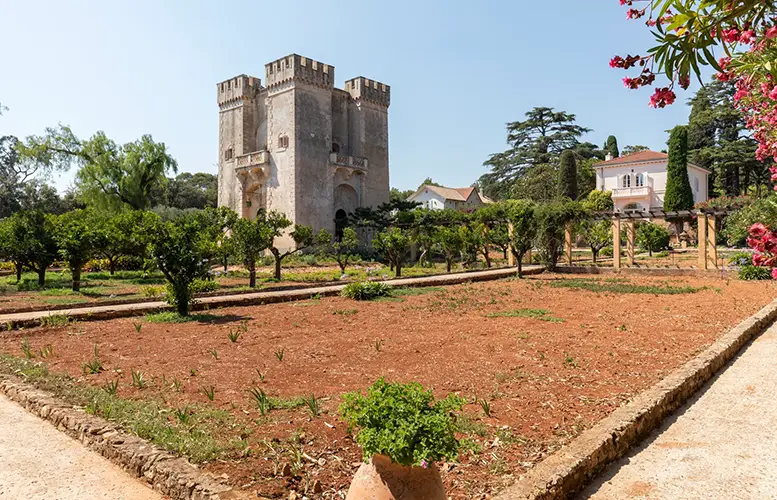
Le Grand Jardin is an extraordinary 13th-century walled estate on the island of Sainte Marguerite that holds one of history’s most captivating mysteries. During the reign of Louis XIV, the property served as a prison for the legendary Man in the Iron Mask, whose identity remains one of France’s greatest unsolved enigmas.
The mysterious prisoner was held for 11 years, between 1687 and 1698, and forced to wear a mask whenever seen by others. Historians still to this day debate whether he was a political captive, a member of the royal family or someone whose identity threatened the French crown.
For those looking for an air of mystery, Le Grand Jardin is the only private property on Sainte Marguerite Island, and those who rent it will arrive at the exclusive three-and-a-half-acre retreat by private boat or helicopter. The estate boasts 12 bedrooms across six buildings, including the Governor’s House, three cottages and a guest house, as well as the ancient fortress tower itself.
Guests can explore the very chambers where one of history’s most famous captives paced, while enjoying modern luxuries such as an onsite gym, massage room and hammam, wine cave, and helipad.
2. Where Italian Unification Was Declared, Naples
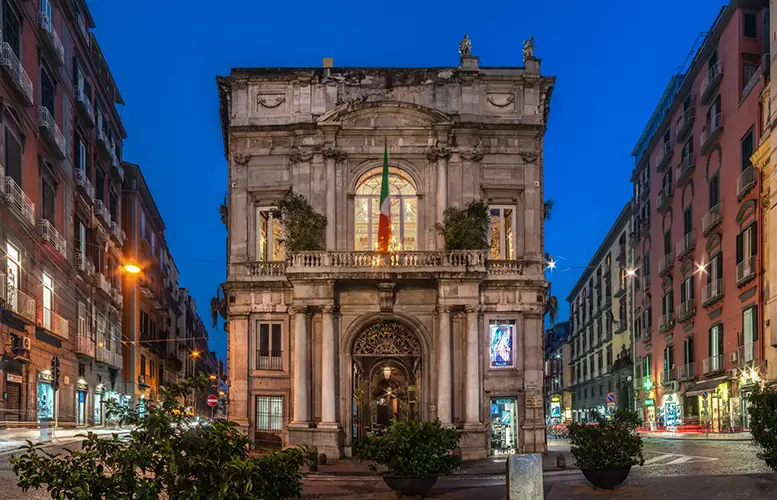
Standing proudly in the heart of Naples, Palazzo Napoleone witnessed one of the most pivotal moments in Italian history. In the 19th century, Italy was divided into separate kingdoms and territories rather than the unified nation of today.
Giuseppe Garibaldi, a revolutionary leader, led a military campaign to unite these fragmented regions under one Italian crown. On September 7, 1860, from this palazzo’s iconic balcony, Garibaldi announced the annexation of the Kingdom of the Two Sicilies into the Kingdom of Italy, effectively completing the unification of modern Italy and creating the nation-state that exists today.
And you have the opportunity to stay in the rooms where the architect of Italian independence once planned the future of a nation. Palazzo combines historical grandeur with refined luxury, including beautiful original frescoes and marble work throughout. Its six bedrooms boast valuable antiques that have been finely restored by skilled artisans who still work in Naples today.
Guests can step onto the very balcony where Garibaldi made his historic proclamation, overlooking the vibrant streets of Naples that erupted in celebration over 160 years ago. The palazzo’s location also provides easy access to Naples’ cultural heritage, from ancient Roman sites to world-class museums.
3. A Domesday Book Treasure, England
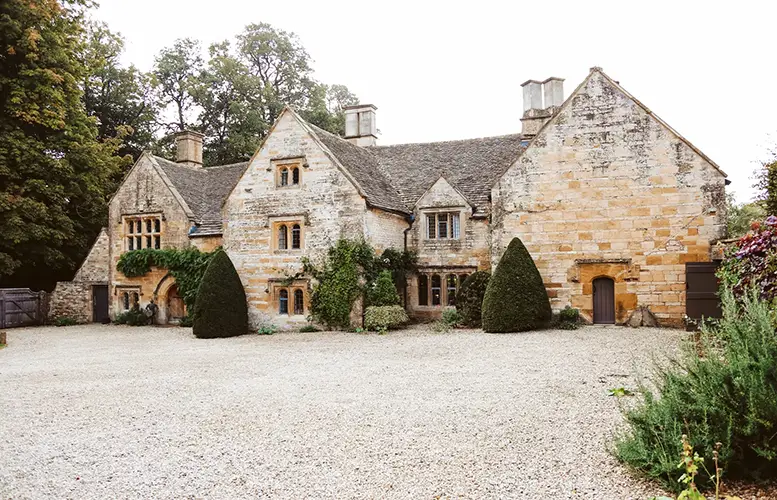
Dating back over a millennium, The Manor was mentioned in the legendary Domesday Book, the survey and property valuation of England and Wales made by William the Conqueror in the 11th century.
After conquering England in 1066, William commissioned the census to record every piece of land, its owners, and its value throughout his new kingdom, and it became one of the most important historical documents in English history.
The properties mentioned within The Domesday Book, including The Manor, represent some of the oldest continuously inhabited sites in England, with histories tracing back nearly a thousand years.
Today, the Manor offers guests the chance to stay in buildings that once hosted nobility, scholars, and dignitaries.
Lovingly restored, the property blends its ancient heritage with contemporary luxury, featuring original stone archways, timber beams, and medieval details, while offering the comfort of modern elegance.
While here, guests can explore grounds that have been cultivated for a millennium, walk through halls where medieval lords once held court, and sleep in chambers that have sheltered travelers for centuries. The property offers a unique window into English rural aristocratic life.
4. Michelangelo’s Master’s Former Home, Florence
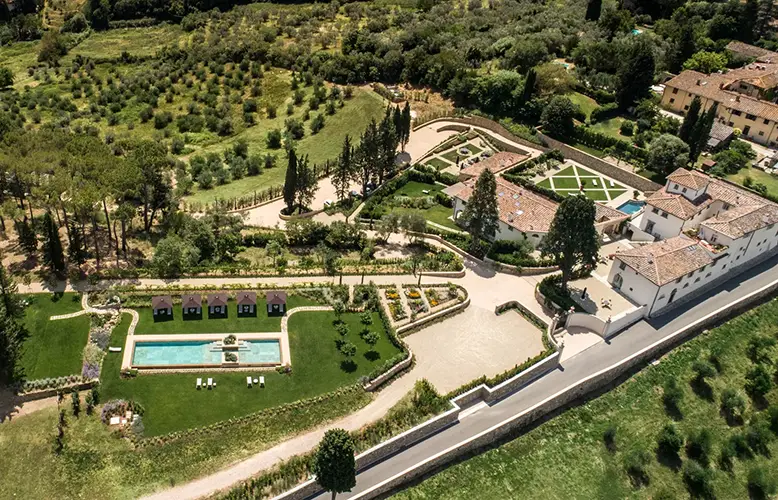
Feronia is the former home of Domenico Ghirlandaio, the master painter who instructed a young Michelangelo Buonarroti. Known for his intricate frescoes and portraits of notable Florentine citizens, Ghirlandaio was one of Florence’s most accomplished Renaissance artists.
And when Michelangelo was just 13 years old in 1488, he became Ghirlandaio’s apprentice and was taught the basic painting methods and aesthetic concepts that would later inform his creation of his most famous masterpieces, like the David statue and the ceiling of the Sistine Chapel.
Feonia can be found in the heart of Florence and the period features running throughout the property reflect the character and atmosphere of 15th-century Florence, when the city was the beating heart of European art and culture.
You can easily picture the young Michelangelo working in these spaces, learning the techniques that would later create some of history’s most celebrated artworks.
5. An Ancient Fortress Against Pirates, Solta Island
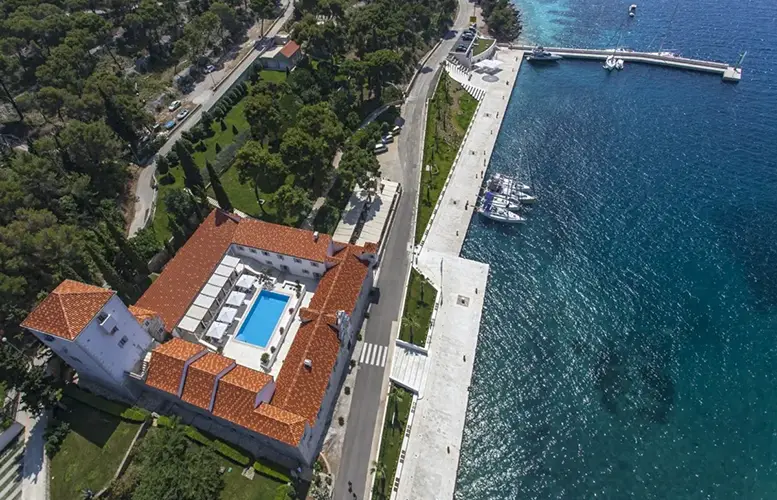
Perched dramatically along Croatia’s stunning Dalmatian coast is Hotel Unique, a luxurious hotel occupying a centuries-old castle. Back in the day, the fortress played an important role in protecting the island against pirates.
The locals lived in constant threat of the pirates who would raid the island, seizing goods and taking people for ransom or slavery. So, noble brothers built the castle to defend Solta and the local communities.
The fortress holds a strategic position overlooking the Adriatic Sea, where guests can enjoy breathtaking views from the same vantage point from which medieval sentries once watched for approaching enemy ships.
Original defensive features can be seen throughout the hotel, including thick stone walls and watchtowers, which have been carefully preserved and thoughtfully integrated into the accommodation’s luxurious design.
Guests can explore ancient defensive chambers, stroll along the ramparts where soldiers once stood guard, and dine in rooms that once served as military command centres, all the while enjoying direct access to stunning beaches, an extensive wine cellar, an infinity pool with a Jacuzzi and a sauna, ensuring complete comfort within these historic walls.





